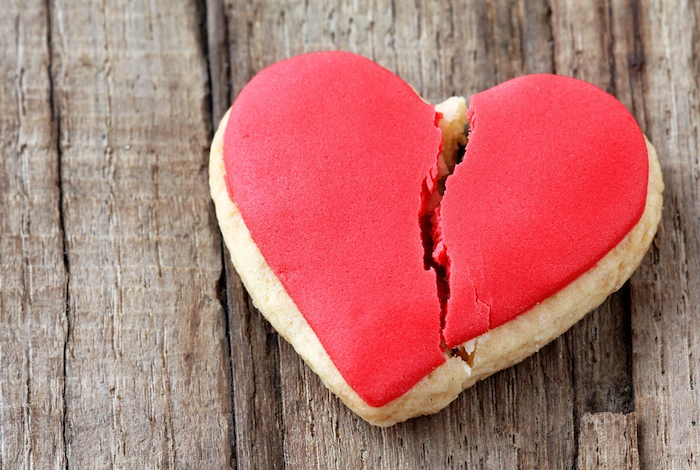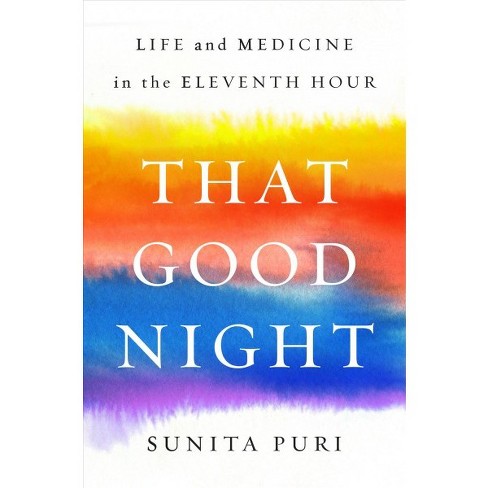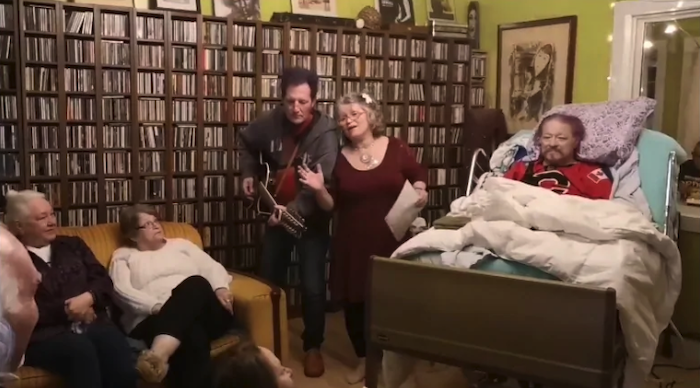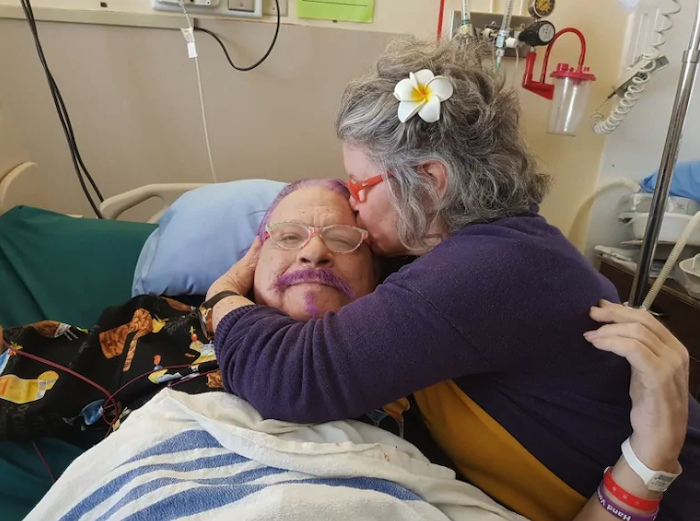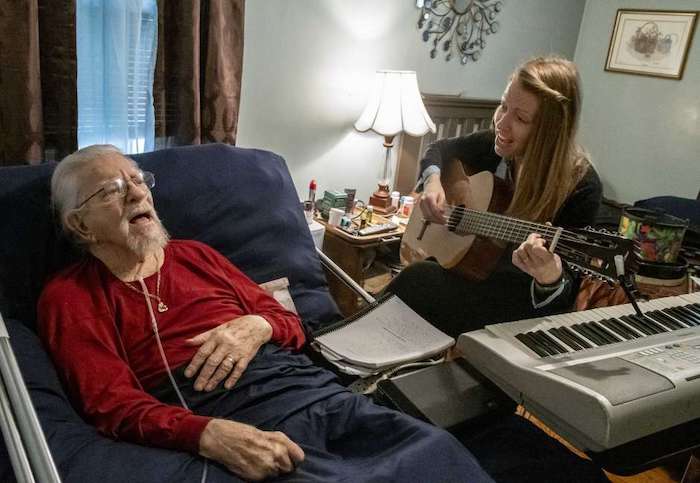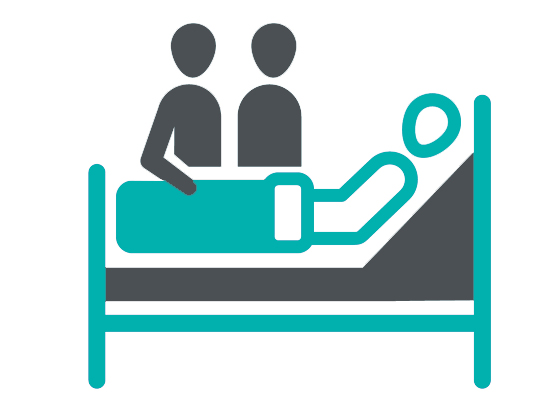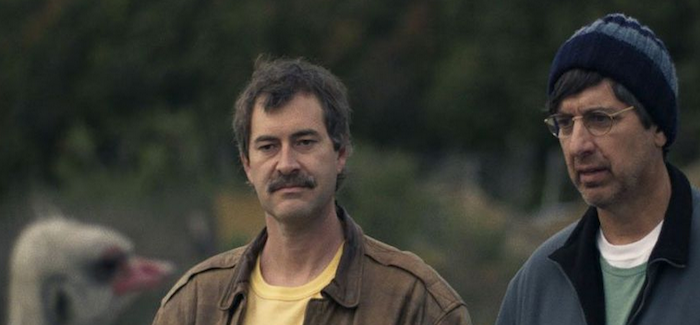The doctor-patient relationship—the heart of medicine—is broken: Doctors are too distracted and overwhelmed to truly connect with their patients, and medical errors and misdiagnoses abound. In Deep Medicine, physician Eric Topol reveals how artificial intelligence can help.

By
A few years ago, on a warm sunny afternoon, my 90-year-old father-in-law was sweeping his patio when he suddenly felt weak and dizzy. Falling to his knees, he crawled inside his condo and onto the couch. He was shaking but not confused when my wife, Susan, came over minutes later, since we lived just a block away. She texted me at work, where I was just finishing my clinic, and asked me to come over.
When I got there, he was weak and couldn’t stand up on his own, and it was unclear what had caused this spell. A rudimentary neuro exam didn’t show anything: his speech and vision were fine; muscle and sensory functions were all OK save for some muscle trembling. A smartphone cardiogram and echo were both normal. Even though I knew it wouldn’t go over too well, I suggested we take him to the emergency room to find out what the problem was.
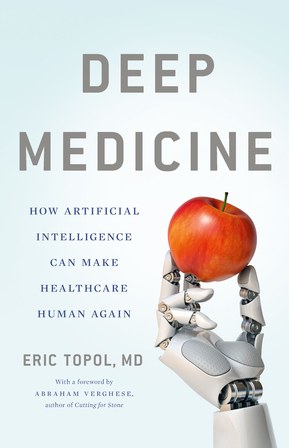 John, a Purple Heart–decorated World War II vet, had never been sick. Only in recent months had he developed some mild high blood pressure, for which his internist had prescribed chlorthalidone, a weak diuretic. Otherwise, his only medicine over the years was a preventive baby aspirin every day. With some convincing he agreed to be seen, so along with his wife and mine, we drove over to the local ER. The doctor there thought he might have had some kind of stroke, but a head CT didn’t show any abnormality. But then the bloodwork came back and showed, surprisingly, a critically low potassium level of 1.9 mEq/L—one of the lowest I’ve seen. It didn’t seem that the diuretic alone, which can cause less extreme reduction in potassium, could be the culprit. Nevertheless, John was admitted overnight just to get his potassium level restored by intravenous and oral supplement.
John, a Purple Heart–decorated World War II vet, had never been sick. Only in recent months had he developed some mild high blood pressure, for which his internist had prescribed chlorthalidone, a weak diuretic. Otherwise, his only medicine over the years was a preventive baby aspirin every day. With some convincing he agreed to be seen, so along with his wife and mine, we drove over to the local ER. The doctor there thought he might have had some kind of stroke, but a head CT didn’t show any abnormality. But then the bloodwork came back and showed, surprisingly, a critically low potassium level of 1.9 mEq/L—one of the lowest I’ve seen. It didn’t seem that the diuretic alone, which can cause less extreme reduction in potassium, could be the culprit. Nevertheless, John was admitted overnight just to get his potassium level restored by intravenous and oral supplement.
All was well until a couple of weeks later, when he suddenly started vomiting bright red blood. He was so unwilling to be sick that he told his wife not to call Susan. But she was panicked and called Susan anyway. Again, my wife quickly arrived on the scene. There was blood everywhere, in the bedroom, in the living room, and bathroom. Her father was fully alert despite the vomiting and a black, tarry stool, both of which were clear indications that he was having a major gastrointestinal bleed. He needed to go to the ER again. At the hospital a few hours later, after an evaluation and a consultation with a GI specialist, an urgent endoscopy showed my father-in-law had esophageal varices—a network of abnormal blood vessels—that were responsible for the bleeding.
To do the procedure of localizing the source of bleeding, John was anesthetized and given fentanyl, and when he finally got to a hospital room in the evening, he could barely say a few words. Soon thereafter he went into a deep coma. Meanwhile his labs came back: his liver function tests were markedly abnormal, and his blood ammonia level was extremely high. An ultrasound showed a cirrhotic liver. We quickly came to the realization that the esophageal varices were secondary to end-stage liver disease. A man who had been perfectly healthy for 90 years all of a sudden was in a coma with a rotted liver. He was receiving no intravenous or nutritional support, but he was receiving lactulose enemas to reduce his blood ammonia level from the liver failure. His prognosis for any meaningful recovery was nil, and the attending doctor and the medical residents suggested that we classify him as a do-not-resuscitate order.
Arrangements were made over the next few days for him to come to our house with hospice support, so he could die at home. Late on a Sunday night, the night before we were to take my father-in-law home to die, my wife and daughter went to visit him. They both had been taught “healing touch” and, as an expression of their deep love, spent a few hours talking to him and administering this spiritual treatment as he lay comatose.
On Monday morning, my wife met with the hospice nurse outside the hospital room. Susan told the nurse that, before they went over the details, she wanted to go see her father. As Susan hugged him and said, “Dad, if you can hear me, we’re taking you home today.” John’s chest heaved; he opened his eyes, looked at her, and exclaimed, “Ohhhhhhh.” She asked him if he knew who she was, and he said, “Sue.”
If there was ever a family Lazarus story, this was it. Everything was turned upside down. The plan to let him die was abandoned. When the hospice transport crew arrived, they were told the transfer plan was ditched. An IV was inserted for the first time. The rest of the family from the East Coast was alerted of his shocking conversion from death to life so that they could come to visit. The next day my wife even got a call on her cell phone from her father asking her to bring him something to eat.
My lasting memory of that time is taking John on a wheelchair ride outside. By then he’d been in the hospital for 10 days and, now attached to multiple IVs and an indwelling Foley catheter, was as pale as the sheets. Against the wishes of his nurses, I packaged him up and took him in front of the hospital on a beautiful fall afternoon. We trekked down the sidewalk and up a little hill in front of the hospital; the wind brought out the wonderful aroma of the nearby eucalyptus trees. We were talking, and we both started to cry. I think for him it was about the joy of being alive to see his family. John had been my adopted father for the past 20 years, since my father had died, and we’d been very close throughout the nearly 40 years we had known each other. I never imagined seeing him sick, since he had always been a rock. And now that he had come back to life, compos mentis, I wondered how long this would last. The end-stage liver disease didn’t make sense, since his drinking history was moderate at worst. There was a blood test that came back with antibodies to suggest the remote possibility of primary biliary cirrhosis, a rare disease that didn’t make a lot of sense to find in a now 91-year-old man (the entire family had gotten to celebrate his birthday with him in the hospital). Uncertainties abounded.
He didn’t live much longer. There was debate about going to inject and sclerose the esophageal varices to avoid a recurrent bleed, but that would require another endoscopy procedure, which nearly did him in. He was about to be discharged a week later when he did have another bleeding event and succumbed.
What does this have to do with deep changes with AI? My father-in-law’s story intersects with several issues in healthcare, all of them centering on how hospitals and patients interact.
The most obvious is how we handle the end of life. Palliative care as a field in medicine is undergoing explosive growth already. It is going to be radically reshaped: new tools are in development using the data in electronic health records to predict time to death with unprecedented accuracy while providing the doctor with a report that details the factors that led to the prediction. If further validated, this and related deep learning efforts may have an influence for palliative care teams in more than 1,700 American hospitals, about 60 percent of the total.
There are only 6,600 board certified palliative-care physicians in the United States, or only one for every 1,200 people under care, a situation that calls out for much higher efficiency without compromising care. Less than half of the patients admitted to hospitals needing palliative care actually receive it. Meanwhile, of the Americans facing end-of-life care, 80 percent would prefer to die at home, but only a small fraction get to do so—60 percent die in the hospital.
A first issue is predicting when someone might die—getting that right is critical to whether someone who wants to die at home actually can. Doctors have had a notoriously difficult time predicting the timing of death. Over the years, a screening tool called the Surprise Question has been used by doctors and nurses to identify people nearing the end of life—to use it, they reflect on their patient, asking themselves, “Would I be surprised if this patient died in the next 12 months?” A systematic review of 26 papers with predictions for over 25,000 people, showed the overall accuracy was less than 75 percent, with remarkable heterogeneity.
Anand Avati, a computer scientist at Stanford, along with his team, published a deep learning algorithm based on electronic health records to predict the timing of death. This might not have been clear from the paper’s title, “Improving Palliative Care with Deep Learning,” but make no mistake, this was a dying algorithm. There was a lot of angst about “death panels” when Sarah Palin first used the term in 2009 in a debate about federal health legislation, but that was involving doctors. Now we’re talking about machines. An 18-layer DNN learning from the electronic health records of almost 160,000 patients was able to predict the time until death on a test population of 40,000 patient records, with remarkable accuracy. The algorithm picked up predictive features that doctors wouldn’t, including the number of scans, particularly of the spine or the urinary system, which turned out to be as statistically powerful, in terms of probability, as the person’s age. The results were quite powerful: more than 90 percent of people predicted to die in the following three to twelve months did so, as was the case for the people predicted to live more than 12 months. Noteworthy, the ground truths used for the algorithm were the ultimate hard data—the actual timing of deaths for the 200,000 patients assessed. And this was accomplished with just the structured data in the electronic records, such as age, what procedures and scans were done, and length of hospitalization. The algorithm did not use the results of lab assays, pathology reports, or scan results, not to mention more holistic descriptors of individual patients, including psychological status, will to live, gait, hand strength, or many other parameters that have been associated with life span. Imagine the increase in accuracy if they had—it would have been taken up several notches.
An AI dying algorithm portends major changes for the field of palliative care, and there are companies pursuing this goal of predicting the timing of mortality, like CareSkore, but predicting whether someone will die while in a hospital is just one dimension of what neural networks can predict from the data in a health system’s electronic records. A team at Google, in collaboration with three academic medical centers, used input from more than 216,000 hospitalizations of 114,000 patients and nearly 47 billion data points to do a lot of DNN predicting: whether a patient would die, length of stay, unexpected hospital readmission, and final discharge diagnoses were all predicted with a range of accuracy that was good and quite consistent among the hospitals that were studied. A German group used deep learning in more than 44,000 patients to predict hospital death, kidney failure, and bleeding complications after surgery with remarkable accuracy.
DeepMind AI is working with the US Department of Veterans Affairs to predict medical outcomes of over 700,000 veterans. AI has also been used to predict whether a patient will survive after a heart transplant and to facilitate a genetic diagnosis by combining electronic health records and sequence data. Mathematical modeling and logistic regression have been applied to such outcome data in the past, of course, but the use of machine and deep learning, along with much larger datasets, has led to improved accuracy.
The implications are broad. As noted physician-author Siddhartha Mukherjee reflected, “I cannot shake some inherent discomfort with the thought that an algorithm might understand patterns of mortality better than most humans.” Clearly, algorithms can help patients and their doctors make decisions about the course of care both in palliative situations and those where recovery is the goal. They can influence resource utilization for health systems, such as intensive care units, resuscitation, or ventilators. Likewise, the use of such prediction data by health insurance companies for reimbursement hangs out there as a looming concern.
Going back to my father-in-law’s case, his severe liver disease, which was completely missed, might have been predicted by his lab tests, performed during his first hospitalization, which showed a critically low potassium level. AI algorithms might have even been able to identify the underlying cause, which remains elusive to this day. My father-in-law’s end-of-life story also brings up many elements that will never be captured by an algorithm. Based on his labs, liver failure, age, and unresponsiveness, his doctors said he would never wake up and was likely to die within a few days. A predictive algorithm would have ultimately been correct that my father-in-law would not survive his hospital stay.
But that doesn’t tell us everything about what we should do during the time in which my father-in-law, or any patient, would still live. When we think of human life-and-death matters, it is hard to interject machines and algorithms—indeed, it is not enough. Despite the doctors’ prediction, he came back to life and was able to celebrate his birthday with his extended family, sharing reminiscences, laughter, and affection. I have no idea whether human healing touch was a feature in his resurrection, but my wife and daughter certainly have their views on its effect. But abandoning any efforts to sustain his life at that point would have preempted the chance for him to see, say good-bye to, and express his deep love for his family. We don’t have an algorithm to say whether that’s meaningful.
Complete Article ↪HERE↩!


